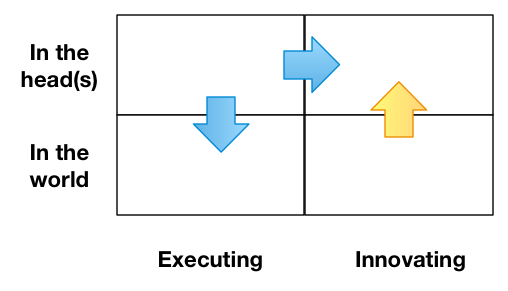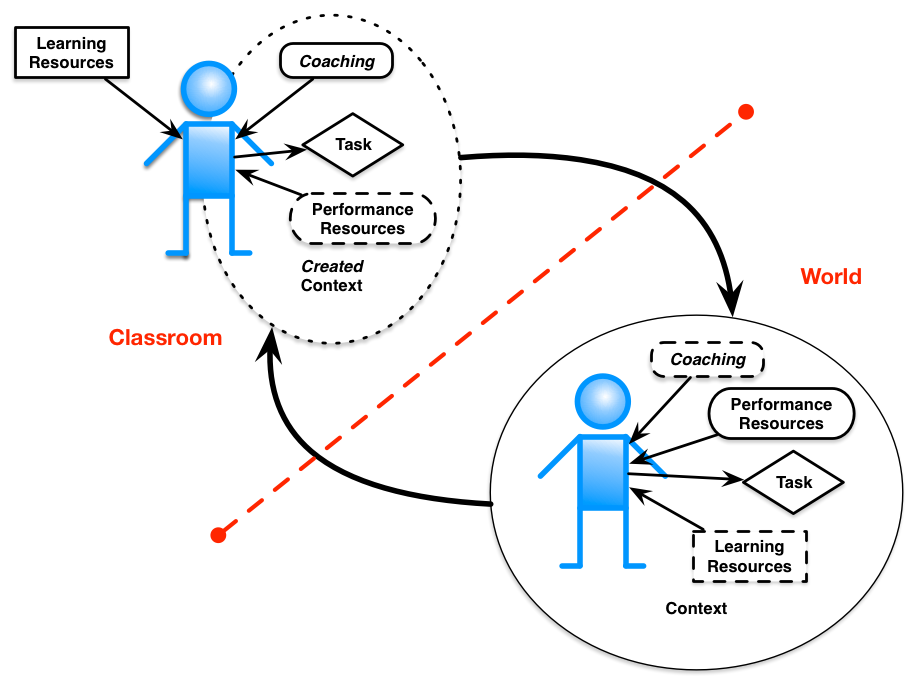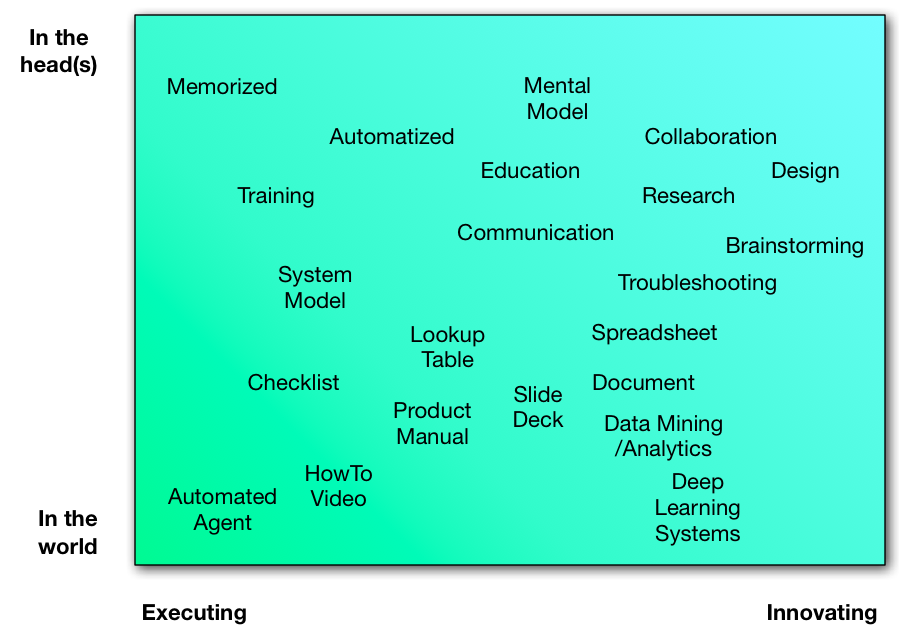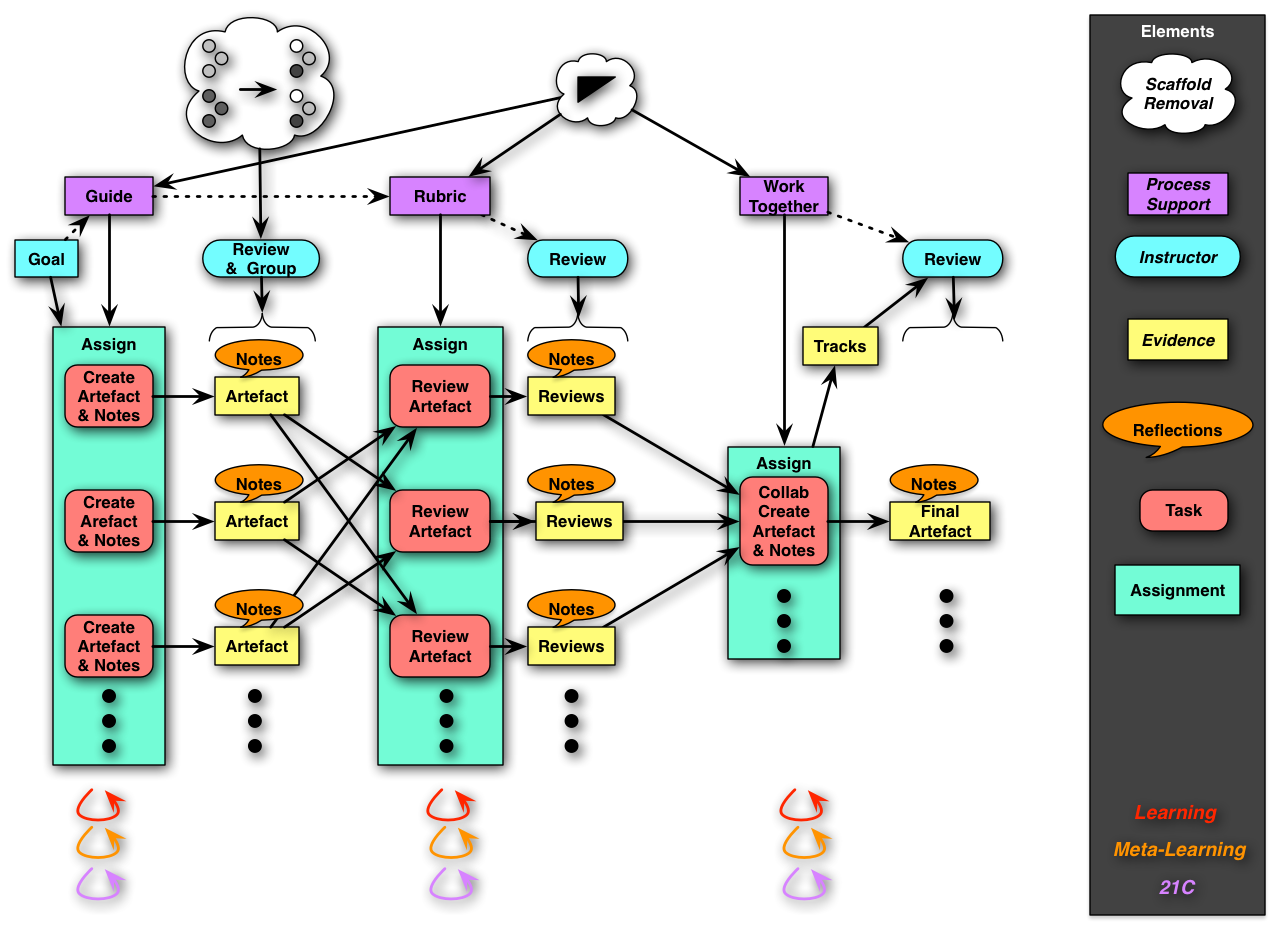I frequently say that L&D needs to move from just ensuring optimal execution to also supporting continual innovation. Can these co-exist, or are they fundamentally different? I really don’t know, but it’s worth pondering.
Kotter (the change management guru), has begun to advocate for a dual-operating system approach, where companies jointly support an operational hierarchy and an innovation network that are coupled. I haven’t read his book on the topic, but it seems to be a bit extrinsic, a way of bolting on innovation instead of making it intrinsic to the operation.
On the other hand, there is quite a bit of expression for more flexible systems, a more podular approach. Teaming or small nodes are increasingly appearing as not just for innovation, but ongoing operation. However, it’s not clear how the various different areas are coordinated, so how marketing across pods maintains coherent.
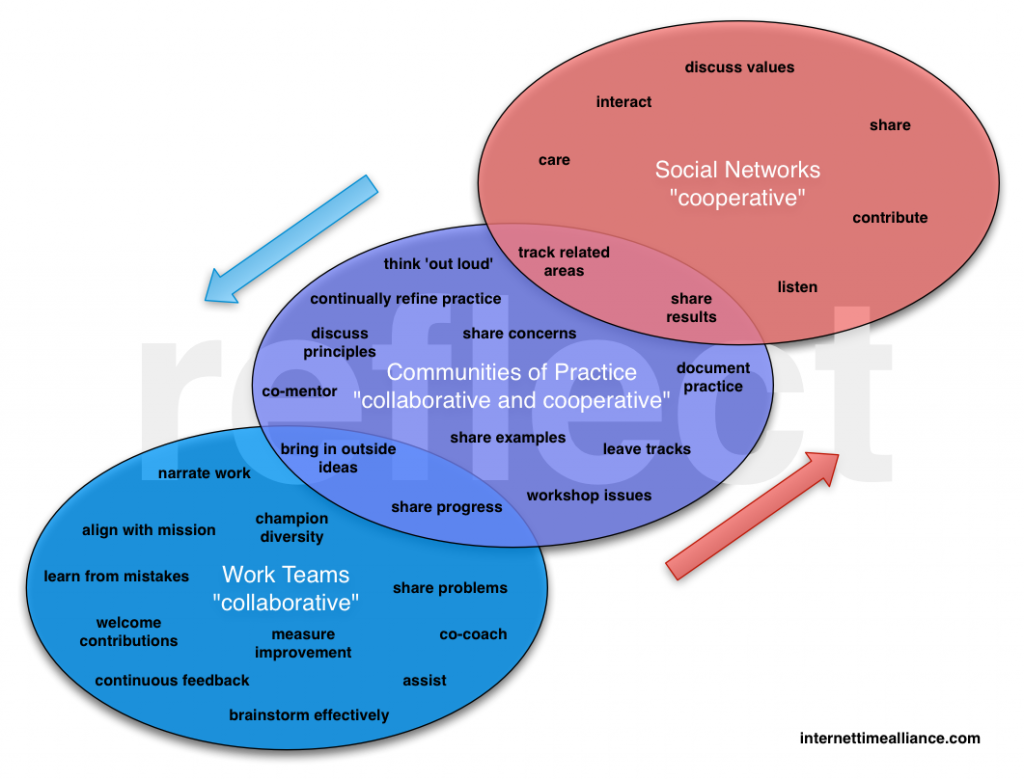 This is what led to our Coherent Organization model. The notion is that the teams are coming in from, and reporting back up through, their communities. And their communities are communicating both within, and outside of, the organization.
This is what led to our Coherent Organization model. The notion is that the teams are coming in from, and reporting back up through, their communities. And their communities are communicating both within, and outside of, the organization.
It’s not clear to me whether the team approach can scale to a global organization, or whether you need the hybrid model. I can see that the hybrid model would appeal to existing business folks who would be concerned about optimization in execution. I can see that the new model would at least require fundamental changes in mechanisms, and perhaps a willingness to tradeoff absolute perfection in execution to maintain continuing innovation and customer-responsiveness.
While intuitively the more biologically inspired approach sounds like the longer-term solution, it’s non-trivial in terms of creating cultures that are appropriately conducive. I think that organizational operations may be at an inflection point, and there does seem to be data that supports more radical flexibility. I think a performance ecosystem coupled with a learning organization environment is likely going to be the way to move. How you get there is part of the revolution that’s needed. Start small, scale out, etc. And I hope L&D can help lead the way.
